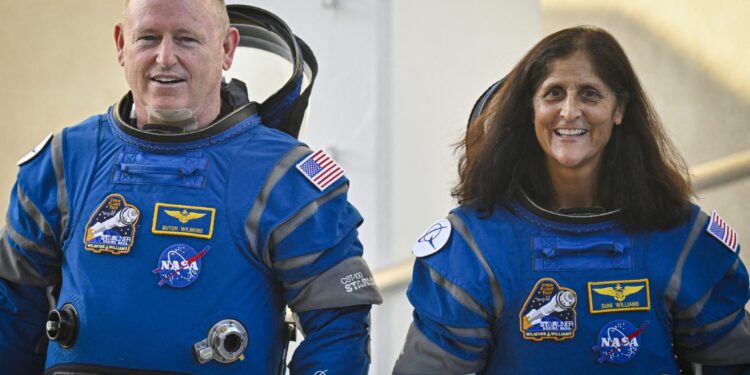
Astronauts Butch Wilmore and Suni Williams will return to earth on a SpaceX Dragon capsule in February instead of the Boeing Starliner that they used to reach the International Space Station.
NASA Administrator Bill Nelson delivered the news during a briefing on Saturday, ending months of speculation over how much longer the astronauts would remain in limbo.
The Starliner will instead return to earth from the ISS without a crew, allowing NASA and Boeing to determine root causes of its malfunctions so it can continue to serve as a piece of the space agency’s plans to maintain access to the ISS, he added.
“Spaceflight is risky even at its safest and even at its most routine. And a test flight by nature is neither safe nor routine,” Nelson said, adding that “our core value is safety, and it is our North Star.”
The two astronauts have been aboard the ISS since June while the original plan was for the mission to last just eight days. The test flight marked the first time Boeing’s Starliner carried astronauts after earlier tests were unscrewed.
But a helium leak and thruster malfunctions on the Starliner has kept them in space for months while NASA and Boeing considered ways to being them back. Despite the months-long delay, NASA has maintained that the astronauts are not “stranded” on the ISS.
“The bottom line relative to bringing Starliner back is there was just too much uncertainty in the prediction of the thrusters,” Steve Stich, program manager for NASA’s Commercial Crew program, said Saturday, pointing to the undock procedure, de-orbit burn, and separation sequence. “It was just too much risk for the crew.”
The Starliner will undock and land in early September. Meanwhile, the SpaceX mission that will bring Williams and Wilmore back—dubbed Crew 9—is due to launch in late September carrying two astronauts, leaving two other seats available for Williams and Wilmore, according to NASA.
They will return months later, pushing their total time in space to eight months, if all goes according to plan. With their extra time in orbit, Williams and Wilmore will continue to perform experiments and maintenance.
“Boeing continues to focus, first and foremost, on the safety of the crew and spacecraft,” a company spokesperson said a statement. “We are executing the mission as determined by NASA, and we are preparing the spacecraft for a safe and successful uncrewed return.”
While NASA’s choice to use a SpaceX capsule instead of the Starliner is a blow to Boeing, Norm Knight, director of NASA spaceflight operations, said the Starliner is a “robust” vehicle with “excellent flying qualities” and has performed well overall.
On Aug. 2, Boeing said it was confident that its spacecraft would be able to being back Williams and Wilmore. But on Aug. 7, NASA revealed that discussions had evolved, saying it was more seriously considering SpaceX’s Crew Dragon vehicle, which has been taking astronauts to and from the ISS for four years.
When asked Saturday how NASA can rebuild trust with Boeing, NASA Associate Administrator Jim Free replied there is no issue with trust.
“I think we’re looking at the data, and we view the data and the uncertainty that’s there differently than Boeing does,” he said. “It’s not a matter of trust. It’s our technical expertise and our experience that we have to balance.”
Ken Bowersox, NASA’s associate administrator for space operations, acknowledged there were a lot of tense discussions. “So people have emotional investment in either option, and that gives you a healthy discourse.”
Nelson said he is “100%” certain that Boeing will launch another crewed mission on Starliner in the future, citing the working relationship between NASA and the company.
But complicating NASA’s decision Saturday to use SpaceX is the fact that the spacesuits that Wilmore and Williams have are compatible with the Starliner but not with the Dragon capsule.
That’s a feature of a major shift in NASA’s strategy launched a decade ago, when the space agency decided to rely more on the burgeoning private-sector industry.
After the space shuttle fleet was retired, NASA awarded Boeing and SpaceX contracts in 2014 to take astronauts to and from space.






